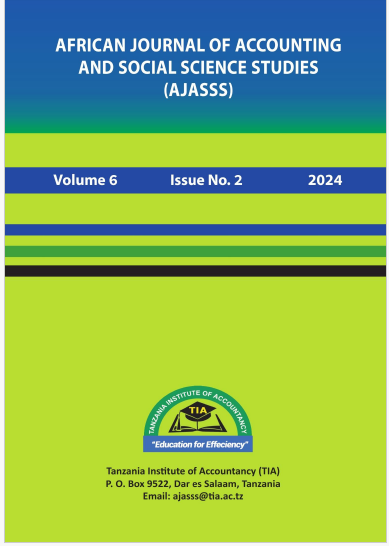Determinants of Enrolment Rate Decline in Higher Learning Institutions: A Case of the Tanzania Institute of Accountancy
Keywords:
higher learning institutions,, tudent enrolment rate declines, determinantsAbstract
The decline in the enrolment rate is not an uncommon trend in most higher learning
institutions, and the reasons for this have never been common to all universities. This
study contextually identifies the key determinants of enrolment rate decline for
procurement and logistics management (PLM) programs in public higher learning
institutions using the Tanzania Institute of Accountancy (TIA) as a case study. This study
adopted a cross-sectional research design to collect empirical data from 302
respondents pursuing various programs offered by the institute, including Accountancy
(ACC), Business Administration (BA), Marketing & Public Relations (MPR), Human
Resource Management (HRM), and Public Sector Accounting and Finance (PSAF).
Data were analysed using SPSS 24, where a multiple regression model was developed
to determine the linear effects of the nine determinants of enrolment rate decline. The
results show that the key determinants of enrolment decline include entry qualifications,
lack of information about the PLM program, lack of passion for the PLM program,
negative community myths, and lack of social support. Other determinants, such as
students’ ambitions, lack of funds, lack of information about the labour market, and
inadequate training facilities, have an insignificant influence on enrolment rate decline.
This finding implies that information regarding the PLM program is very important.
Therefore, it is important to disseminate information about the PLM program’s
structure, cost, and duration to potential applicants.
Downloads
Downloads
Published
How to Cite
Issue
Section
License
Copyright (c) 2025 African Journal of Accounting and Social Science Studies (AJASSS)

This work is licensed under a Creative Commons Attribution 4.0 International License.
